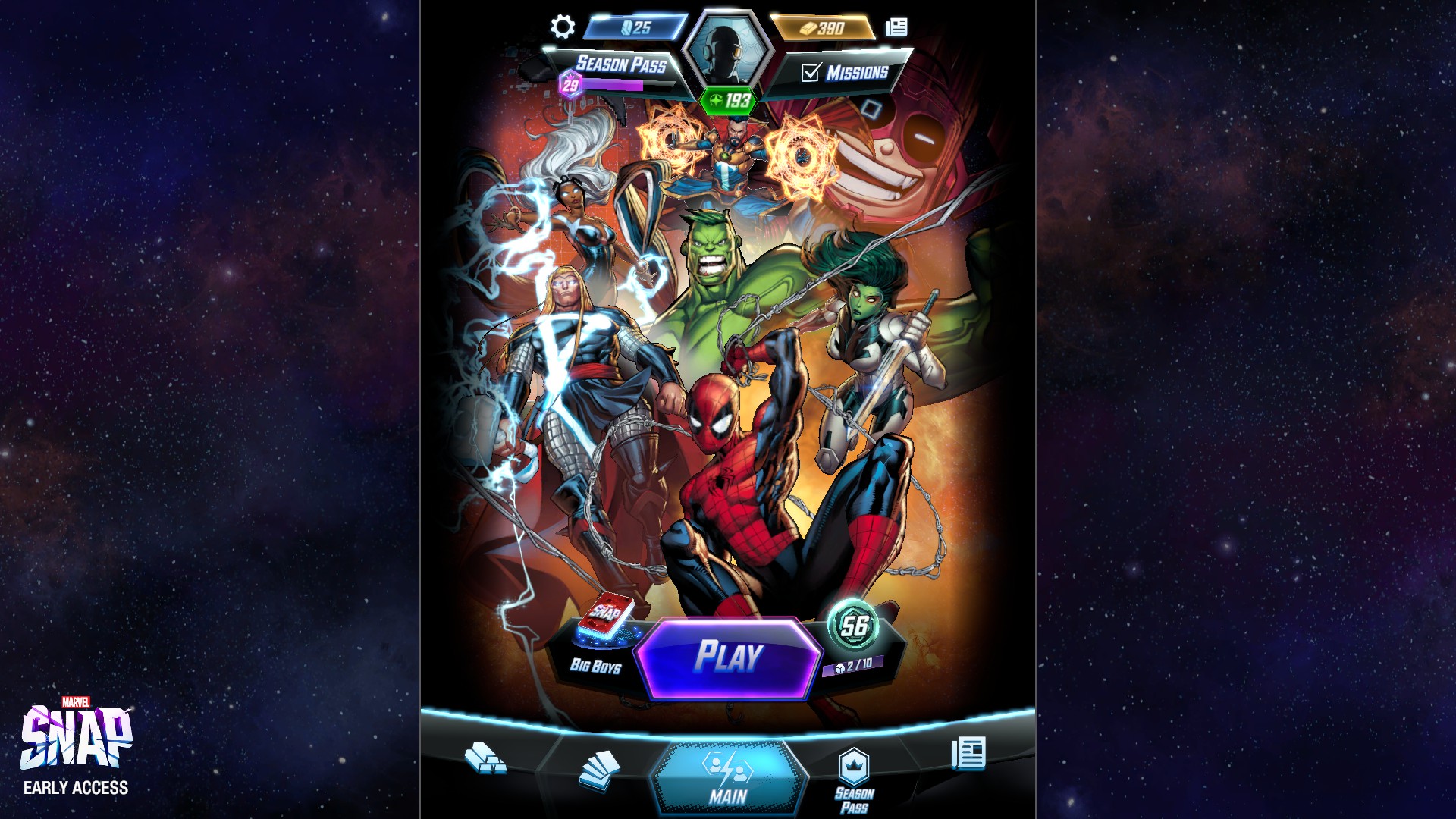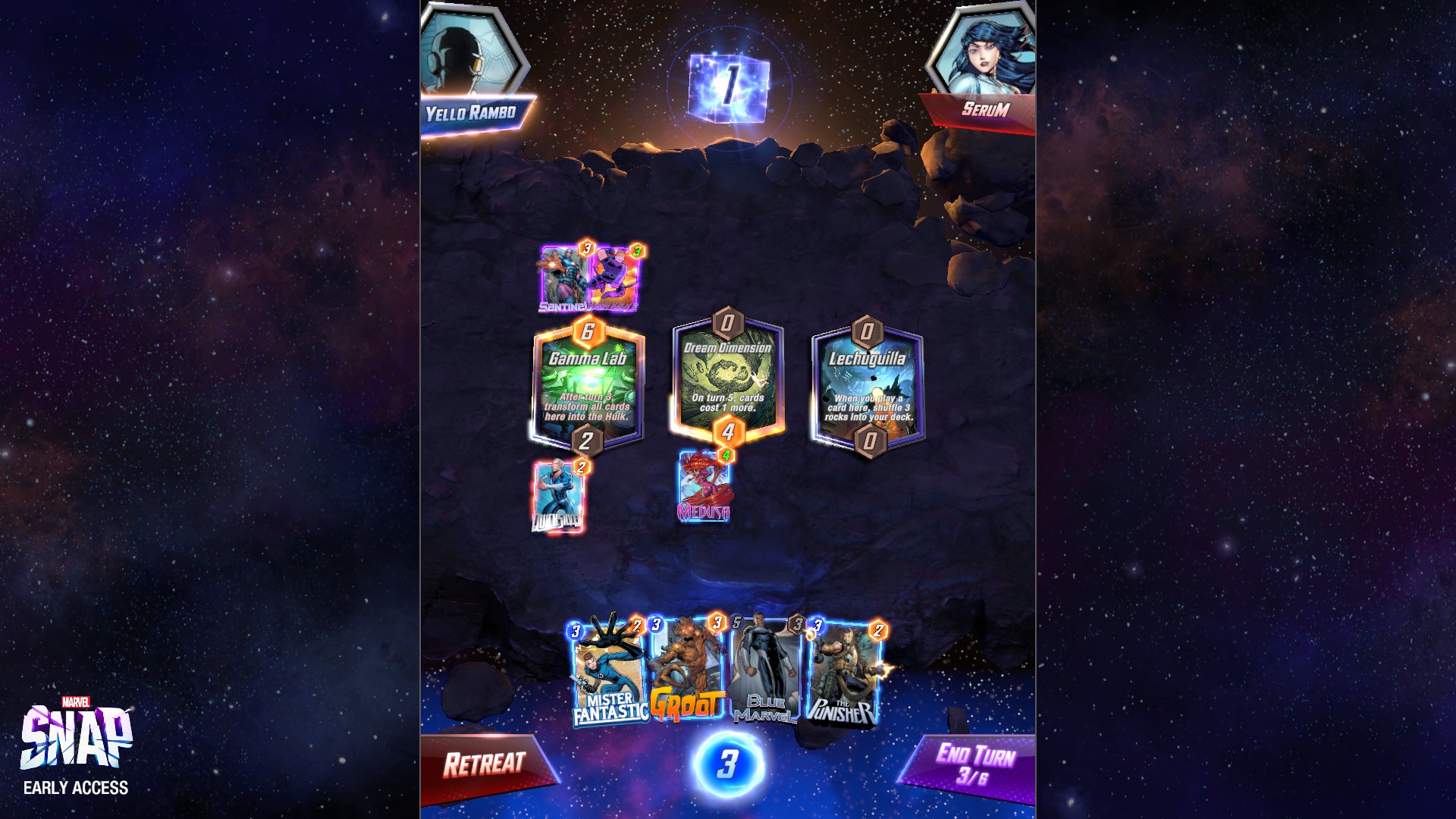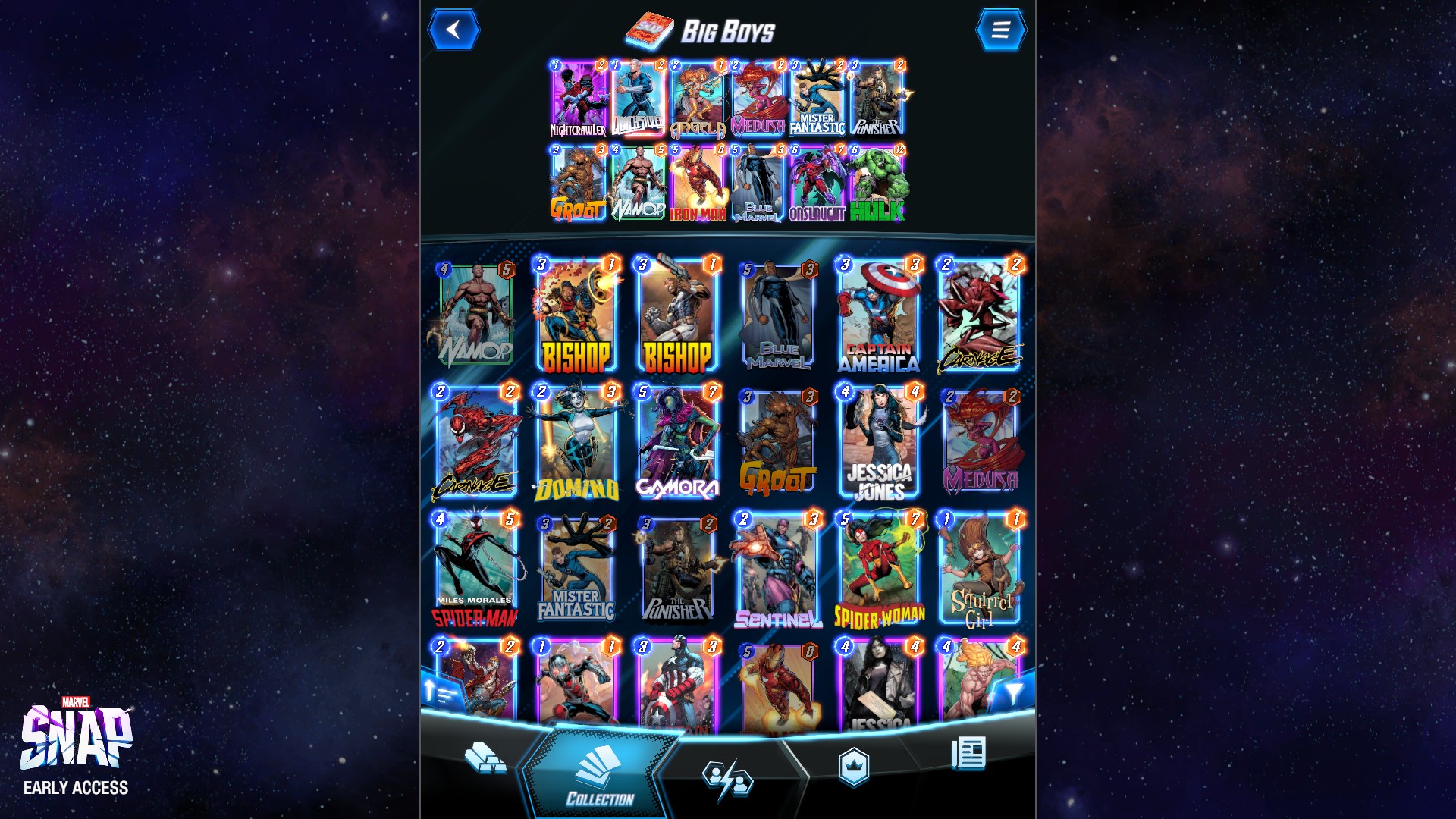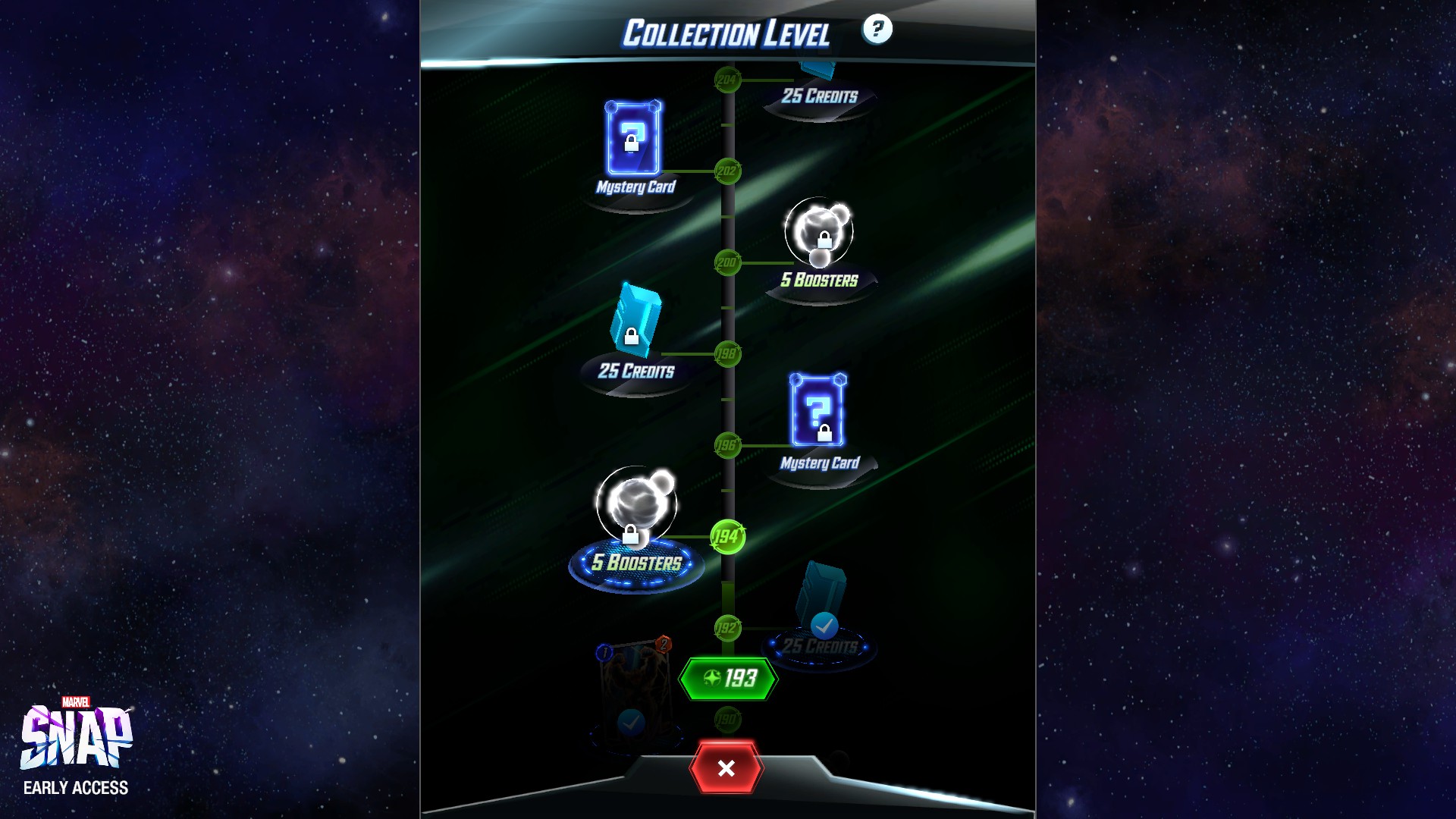(Just to make things clear – we don’t plan to turn this into a Marvel Snap website, this might even be a one-off article. But many HS streamers and YouTubers were promoting the game, and there’s a clear overlap in audiences, with many of you wanting to see some Snap content after we asked on Twitter. So we wanted to deliver something and see how well this kind of content reaching into other card games is received. – Stonekeep)
For many of you, Ben Brode needs no introduction. But in case you started playing the game more recently, he’s a former Game Director of Hearthstone. Even though he left the game back in 2018, some players still see him as the face of Hearthstone – 4 years later! As you can imagine, he left a lasting impression on the community.
After leaving Blizzard, he formed his own game development company called Second Dinner. We didn’t know what they were working on for the longest time, only hearing some rumors, until their project was officially announced this May. After some limited testing, it has finally been released to the general public, and many have been asking whether it could be a worthwhile alternative to Hearthstone. Of course, it’s way too early to predict the longevity of Marvel Snap (because that’s the project’s name), but it’s clear even after a few days of play that Second Dinner served up a very simple and quick, yet deep and strategic card game with many inspired design choices. Even if the experience is seriously hampered by the monetization and content unlock systems, which are very much in line with what you would expect from a mobile game of this age.
Amazing, Addicting, Marvelous…
I should be working on this article. I should be working on a couple of other articles as well. Instead, I keep playing Marvel Snap. Based on my discussions with friends and colleagues, plus looking through a couple of other reviews of the game, I’m not at all alone with this affliction.
The core gameplay loop of Ben Brode’s latest brainchild is among the best in the genre, featuring enough twists and turns and decision points to make even the longest play sessions compelling. You have three locations, each featuring four card slots, and whoever has the higher cumulative power of their units at a given location by the end of the game wins there. Turns are played out simultaneously and the player in the lead gets their actions resolved first. Win two out of three locations to clinch the match. (If there’s a draw, your advantage at the other location serves as the tiebreaker.)
Just like in Hearthstone, the baseline resources are super streamlined: your decks consist of just twelve cards and the game ends in a mere six turns as your mana – sorry, energy – count ticks up from one to two to three. You can further increase your consistency by adding cards like Quicksilver or Domino which are guaranteed to be drawn on specific turns. It’s a testament to the game’s design that guaranteed vanilla draws on turn one, two and six don’t guarantee a blowout victory, but they nevertheless have an important role to play in the game.
Similarly to how Hearthstone opted to add many in-play random effects to ensure that the games don’t play out the same way over and over again despite the relatively small deck sizes and the consistent mana output, Marvel Snap opts for widely varied effects on the locations to generate gameplay diversity. The effect of the first location is immediately revealed, but the second and the third only become known on the second and the third turn, often prompting leaps into the unknown.
These modifiers are both wide-ranging and well-designed, and each reveal will force quick adjustments in both players’ strategies, allowing for a significant depth over the course of just six turns. From “When you play a card here, add a copy to your hand” to “If you only have one card here, it has +5 Power and “Each card in your hand swaps its Power and Cost,” there’s a lot of good stuff here, and you can never just blindly execute the same strategy. Every game is vastly different, and that’s what keeps you interested.
Danger Room can go snap itself, though. Cards played here have a 25% chance to be destroyed – vintage Brodeian laughter moment stuff.
Yes, that’s a big elephant in the room. While RNG keeps everything fresh and interesting, many matches really come down to luck. If you place the right card at the right spot before the location is even revealed – that might be a game-winning or game-losing play. Not because you’re a great strategist, but because you lost a coinflip. However, since the matches are super short and sweet, even the brutal BS lowrolls are tolerable. You can easily jump back into another game and you don’t feel like you’ve lost that much time or cube investment even if you lose a horrible 25% roll after your opponent already placed 3 cards there with no issues.
Unlike in Hearthstone, there’s no “attacking” the opponent. You play for the location control – players or “minions” have no health. However, it doesn’t mean that there’s no interaction, far from it. Many cards with “on reveal” effects (akin to Hearthstone’s Battlecry) can affect your opponent’s cards negatively, destroy a card in their deck, or even swap location into another random one (you can bait your opponent into playing multiple cards into a beneficial location and then just swap it into something else entirely, giving you a serious advantage). The game is heavily based around mindgames – you want to predict what your opponent will do next turn, while trying to be as unpredictable as possible to reduce the chance of counterplay.
The card design is also inspired and creative, with no Silverback Patriarch-level irrelevant trash present in regular play (there are a few vanilla minions with no effect that are just bad at the start, but even those get some synergies with later cards). Even if you’re not at all invested in the Marvel Cinematic Universe or the comics, the graphics and the abilities are fun to play around with. The cards are clearly explained and you don’t need to be familiar with the characters to understand their abilities.
Then there’s snapping, the key mechanic of the game that allows you to raise the stakes in a match. “Cubes” are sort of ranked points – similar to “stars” in Hearthstone. Each rank takes 10 cubes to progress. Each game starts with one cube at the stake – so if someone retreats early, all he loses (and all opponent gains) is a single cube. This amount is doubled if the game reaches its final turns and runs its natural course, so no player retreats. If you feel like you’re going to lose, you can retreat and only lose the current stake without risking an escalation that isn’t in your favor. However, what’s interesting is that both players also have the option to “snap”, doubling the stakes starting next turn (so the opponent still has time to give up before it’s too late). Both players snapping can move an intense matchup all the way to 8 cubes wagered – nearly a full rank swing! It also serves as a great way to bluff and counter-bluff, further adding player agency. You can fake a good play, instantly snapping going into your final turn, and it’s now up to the opponent to call your bluff (or give you a free win that you otherwise wouldn’t get).
In short, Marvel Snap is an amazing, deep and strategic card game with the quintessential “just one more game” addictive quality that is a core part of the most successful titles. Unfortunately, it is also a mobile game.
…Grindy, Predatory, Unfair
There are merits to the game’s unique progression system. You cannot directly buy or craft any card: instead, you keep earning unlocks by increasing your collection level, which you do by visually upgrading your existing cards. Yes, basically cosmetic upgrades lead to more cards in your collection. This requires two kinds of resources – “boosters” and “credits”. Boosters are card-specific and you get some boosters for a random card from your deck after each match, win or lose. It means that you can quite easily grind them, and after a short period of time you will end up with surplus.
Credits, on the other hand, are only awarded for completing the daily missions and progressing on the battle pass. Or, you know, by opening up your wallet – you can either purchase them directly with Gold (in-game premium currency, like Hearthstone’s Runestones) or by using the same Gold to refill your daily missions. The card unlocks are semi-random, with distinct “pools” offered at different parts of the progression tree. This means that when I look at gameplay streams from the most-advanced players, despite having racked up a ton of playtime and decent results myself in just a couple of days, I find that they use cards I haven’t even seen.
I can’t even fathom how much money they had to have dropped in the game to reach that high collection levels so early. The first “F2P” experience stops around collection level 100 – you’re done with all of your early, new players stuff and you’re left with slow trickle of 6 daily missions + free Credit rewards you can claim from your shop every 24h. Even if you buy the $3 welcome bundle and $10 season pass, you still hit the wall around collection level 200. However, given that the first pool of cards unlocks fully at level 214, the early experience is actually quite pleasing. Even the second pool (levels 222-474) of semi-advanced cards is somewhat within the reach, though unlocking all of it might take you weeks. However, the real issue starts at the third, most advanced pool, which starts around level 500 and goes… actually I don’t even know how far it goes. People report being at collection level 2500+ and still missing some pool 3 cards. New cards will also get added to this pool, so it will only get deeper. Yes, it’s A LOT of grinding given that you can only progress by a few levels each day. And since card unlocks are random, you can be missing a single card necessary to make a deck you want and not see it after months of grinding.
Good thing is that matchmaking is not only based on your ranks, but also on your collection level. It means that if you have a small collection, you will face other people with small collections – meaning that your chances are pretty fair, at least early. It gets a bit worse later, because as in any card game, cards have a varied power level. We had some rounds of balance updates during Beta period, but some of them still remain better than the others. No one expects a perfect balance where every card is exactly on the same level, but it can lead to some really unfun scenarios later. For example, you can get well into pool 3 without opening any of the key, powerful cards – and yet you might be playing against players who did open them and have superior decks. Not because you are lower on your progression, but because you got bad RNG (a kind that can’t be redeemed like the gameplay RNG can).
Worse yet, there are also battle pass-exclusive cards, which will only be made available to non-paying players after eight weeks of exclusivity – and even then, it will only become one of the random unlocks. A targeted card acquisition currency called “Collector Tokens” is in the works, but we don’t know exactly how it will work. But while not very useful for the early game experience, a targeted card acquisition seems like a must-have for pool 3.
Oh, and talking about Gold. Remember how badly Runestones were received in Hearthstone? They actually aren’t even comparable to Snap’s Gold. What worried Hearthstone players after they were announced is exactly what Snap, and many predatory mobile games, are doing. Golds are sold in packs so uneven that you can almost never just buy the right amount you need. You need to mix and match different tiers (each lower tier gives you less Gold per $) or just buy more than you need and “save” the rest for another purchase. I probably don’t have to explain why mobile game devs are doing it. I also probably don’t need to explain why it’s bad and why we shouldn’t accept it in games.

The game is also missing a lot of other features that you might take for granted. Things like unranked mode, in-game events, social systems, or even a good PC client (the current one is a 1:1 mobile port and, as you can see on screenshots above, it doesn’t look great) are still missing. However, ahead of the launch, Second Dinner devs have shared a roadmap (shown above) detailing their plans. Sadly, many of the things are still “in concept”, so we can only assume that it will take a while to push them out.
It only goes to show that the game is still in Early Access and it’s quite barebones feature-wise. We also don’t yet know the cadence of content releases and how Second Dinner will handle balance considerations – or, indeed, if there’s going to be some avenue for high-level competitive play. What is clear is that the foundational gameplay is excellent: now we just need to hope that the accountants can curb their worst excesses.





Honestly this review is refreshing considering a lot of the youtube videos I’ve seen for Snap are sponsored and so don’t necessarily talk about the pitfalls or the poor progression.
If this style of gameplay (ie where you don’t attack but can modify your opponents cards in various ways and play for points) interests you, but you’re turned off either by the Marvel IP or by the predatory monetization, I would recommend trying out Gwent (or giving it another shot if you haven’t played it in a while). There’s definitely negatives to Gwent, but they recently made their battle passes have infinite duration which makes it much more friendly if you end up wanting to spend money on it.
It is a fun game, but I can’t see the longevity in it the march towards competitive top tier decks is completely RNG grind. There’s not enough new cards being introduced to freshen to meta so it all gets a bit stale when you know you’ll be playing the same 4 or 5 decks forever
Got superbored (and uninstalled) by it after playing around 20 matches. Can’t see the longevity of it, either.
Just to clear a few things up for those interested. Credits in the shop are limited per day as follows: 50 credits free 1x/day, 150 credits for 120 gold 2x/day, and 500 credits for 400 gold 3x/day. The game is far from pay to win, you can pay to get slightly ahead faster, but that doesn’t necessarily mean paying for power, rather, you will have slightly more options. It is completely viable to stay either completely f2p, or just pay for each month’s season pass. If you do find yourself ahead of the curve by purchasing credits, matchmaking is currently based on: at or around your collection level. So speeding up your acquisition, again, does not necessarily put you in advantage. Any kind of advantage a player could possibly gain is through the variance in what the player does collect as cards are acquired randomly, rather than in a specific order. The card you just unlocked might be amazing, but the next card might seem like it doesn’t do much for you. All players experience this. Because of all of this, a lot of players prefer to save their accumulated gold that is acquired by playing to get variant art for cards they own and enjoy. I would avoid using fast upgrade in the shop as it costs an additional 5 Credits per missing booster, significantly inflating the cost of upgrading cards, and actually slows your progress. Additionally, Boosters are capped at 1000 earned per day at the moment, and you earn 1 booster per turn played in a match for a random card in your deck, currently weighted towards lower rarity quality, up to 6 (or in the case of Limbo location, 7) turns, and thus 6 (or 7) boosters for that card. You will progress steadily simply by playing the game normally. Additional missions per day is currently capped to 3 refreshes for 2 missions each, up to a total of 6 additional missions. I’ve been playing since June in the closed beta, and have been playing casually only buying the season pass each month. I am currently collection level 2400 or so. Currently I am missing about 10 cards in that time frame, but am very happy with my collection. It’s not about the destination, it’s about the journey, and my experience has been a fun and unique one, which is how the collection acquisition was designed.
Are there any benefits from buying variants for 700 gold?
Nope waste of gold that you could use for credits and level up with. When you level a card to full it goes infinite and you get another copy you can start levelling again with extra visual flair.